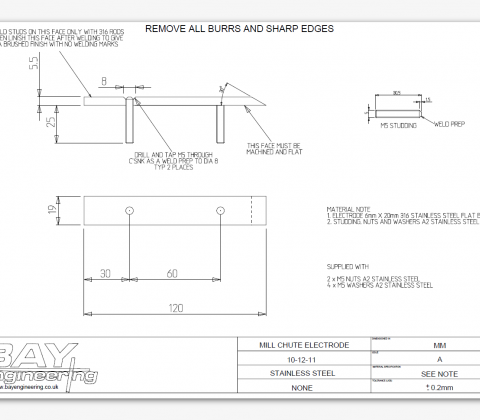Drawing Formats
Published: 09/01/2017
Drawings are quite often sent to us in the PDF format. This normally results in clear, easy to read drawings that we can print out for use in the workshop. This is a very effective means of sending drawings.
In our factory nearly all milling is programmed on our CAD software (OneCNC-XR5 Mill 3D Expert), this means that before your part is made it has to be redrawn in the software.
There are many import formats that are readable by our CAD software which eliminate this redrawing.
Redrawing simple parts is quick and easy so a PDF is still an effective way of sending drawings. However, on more complex components importing from your CAD via an intermediate format like a DXF can have an advantage as it saves us redrawing.
There are downsides to importing however. As many features may be machined using the same cutter it is important that the whole drawing is drawn as mid limit.
As an example, if two features are drawn as 25mm diameter, one has a plus 0.1mm limit and the other has a minus 0.1mm limit unless they are drawn as 25.05mm and 24.95mm it would be difficult to achieve as you effectively have no limit, the diameter has to measure 25mm exactly.
Imported files on complex parts are still useful even if not drawn as mid limit as many features can be used and the others can be modified.
Contact us for more information.



